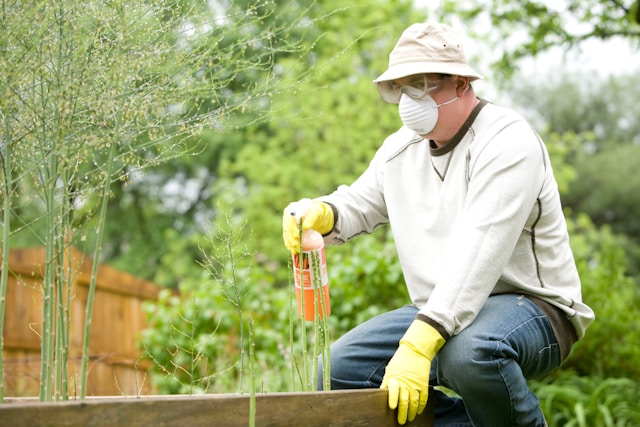Thousands of UK families end up with pest-related health issues every year that could’ve been avoided. A few ants in the kitchen or scratching in the walls might seem harmless, but they’re often warning signs of bigger problems ahead. Modern pest control scheduling software helps professionals tackle infestations efficiently, though understanding the risks matters first. This isn’t about being squeamish—it’s about protecting your family and avoiding expensive damage.
Health Risks You Didn’t See Coming
Pests aren’t just annoying houseguests. They’re walking germ factories that can seriously harm your family.
Disease Carriers Everywhere
Rats and mice carry some seriously nasty stuff. Salmonella poisoning from contaminated surfaces happens more than you’d think, but Hantavirus is the real terror—it attacks your lungs and can kill you. In the UK, we’ve also got Weil’s disease to worry about, especially around water sources. These rodents don’t just contaminate what they eat; they leave droppings and urine everywhere they go, turning your home into a bacterial playground.
Cockroaches are worse. These disgusting creatures crawl through sewers before touring your kitchen worktops. They spread E.coli, gastroenteritis, and various food poisoning bacteria right where you prepare meals. Even spotless homes can’t keep them out once they’ve decided to move in. What’s particularly revolting is that cockroaches actually prefer warm, humid environments—exactly what most UK homes provide during winter months.
Flying pests bring their own problems. Ticks spread Lyme disease, and with warmer summers, mosquitoes stick around longer potentially carrying West Nile virus. Wasps become increasingly aggressive as autumn approaches, making outdoor activities risky for families.
Breathing Gets Harder
Cockroach droppings trigger childhood asthma more than most parents realise. Kids in infested homes end up in A&E far too often. Those tiny bits of cockroach waste float through the air straight into little lungs.
Dust mites love damp conditions, and their microscopic droppings trigger allergic reactions whilst making asthma worse. When pests damage property, mould often follows, creating two problems instead of one.
Food Safety Goes Out the Window
Once pests invade your kitchen, everything gets contaminated. Mice chew through packaging, leaving bacteria everywhere. Cockroaches crawl over worktops, inside cupboards, and across cooking utensils.
Business owners face shutdown threats. Food hygiene inspectors don’t mess about, and pest-related violation fines are eye-watering.
Property Damage That Empties Bank Accounts
Pest damage goes way beyond chewed boxes. We’re talking serious money that can wreck your finances.
Structural Disasters
Termites eat your house from inside out. By the time you notice damage, they’ve been munching for months. Load-bearing structures get compromised, repair bills hit tens of thousands, and insurance won’t cover it. The sneaky thing about termites is they avoid daylight, working inside wooden beams where you can’t see them until significant damage occurs.
Rodents love chewing electrical cables. This isn’t just expensive—it’s dangerous. House fires from rodent-damaged wiring happen every year, with families losing everything. Mice teeth never stop growing, so they constantly gnaw on things to keep them manageable—unfortunately, that includes your expensive copper wiring.
Money Keeps Disappearing
UK homeowners regularly face repair bills from hundreds to thousands of pounds. These costs always hit at the worst times.
Most insurance policies exclude pest damage, calling it “gradual damage.” You’re financially on your own, making prevention crucial.
Property values plummet when pest problems become known. Houses with pest histories sell for less and take longer to shift.
Damage Spreads Fast
Water damage often follows pest problems. Rodents damage pipes, birds mess up roofs, and suddenly you’re dealing with floods too.
Contaminated items need throwing away rather than cleaning. Clothing, bedding, food—replacement costs add up fast during serious infestations.
Professional vs DIY
Choosing between professional pest control and DIY often determines whether you solve the problem or just delay it.
Why Pros Get Results
Professional controllers know pest species, behaviour patterns, and root causes. Years of training and experience matter here. They’ve seen it all before—from minor ant trails to major rodent infestations that have been building for months.
They access industrial-strength treatments unavailable in shops. These products work better, last longer, and need fewer applications. More importantly, professionals know exactly how much to use and where to apply treatments for maximum effectiveness without endangering your family.
Real pest control uses multiple approaches together. Professionals assess your situation, identify entry points, and create custom solutions for your property’s vulnerabilities. They don’t just spray and hope for the best.
DIY Falls Short
Shop-bought products might kill visible bugs but rarely solve underlying problems. Without addressing why pests are there, they’ll return in greater numbers.
Using pesticides wrong endangers family and pets whilst creating resistance in pest populations.
Most people miss the real problem source. Killing visible pests whilst ignoring breeding sites ensures continued infestations.
Financial Sense
Professional services cost more upfront but save money long-term through effective elimination and prevention. Time matters too—professionals handle everything whilst you focus on life.
Peace of mind has real value. Professional guarantees mean you stop worrying about pest problems.
Building Effective Defence
Good pest protection combines prevention, monitoring, and professional help without breaking budgets.
Prevention First
Stop problems before they start:
- Seal entry points: Check cracks, pipe gaps, damaged seals
- Control moisture: Fix leaks, improve ventilation
- Secure food: Use airtight containers, clean preparation areas
- Manage landscaping: Trim plants from walls, clear debris
Regular cleaning removes food sources and breeding sites. Proper rubbish management stops colonies establishing nearby.
Monthly inspections catch problems early when they’re manageable and affordable.
Seasonal Patterns
British weather creates predictable pest cycles:
- Spring: Ant colonies emerge, wasps build nests, garden pests breed
- Summer: Flying insect peak, outdoor dining attraction, holiday vulnerability
- Autumn: Rodents seek shelter, cluster flies invade, last outdoor treatments
- Winter: Indoor breeding, reduced treatment options, heating bill increases
Multiple Defence Lines
Several control methods work better than single approaches. Physical barriers, biological controls, and targeted treatments eliminate existing problems whilst preventing new ones.
Business Needs
Commercial properties face stricter regulations requiring documented pest control for employee and customer protection.
Customer confidence matters—pest issues destroy reputations and damage relationships built over years.
Technology Changes Everything
Modern pest control uses smart sensors for early detection, data analysis for better treatments, and mobile technology for efficient coordination.
Digital records support compliance whilst improving communication. Future developments include biological controls and environmentally sustainable methods.
Wrapping Up
Professional pest protection safeguards health, preserves property value, and prevents expensive damage. The benefits—disease prevention, structural preservation, financial security—outweigh investment costs. Smart property owners implement preventive strategies rather than waiting for problems, maintaining pest-free environments with lasting peace of mind.










